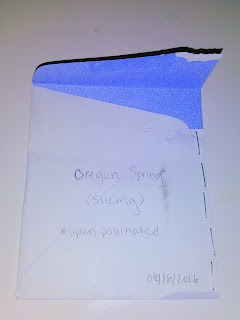You dry basil the same way you dry any herb, really. You grab some scissors and venture off to where you keep your herbs (garden, pots outdoors, pots indoors... Herbs are so great). It's best if you harvest before it starts flowering You snip off however much you want (later I can show you where to cut to make the pant grow more twice as fast!), and head back to the kitchen.
You'll need the following:
- A bundle of basil (or whatever herb you want to dry today)
- a piece of string
Here we go.
Step 1: Wash your herbs (so you don't have bugs crawling around the house)
Step 2: Lay out your herbs and your string in order to gauge what you are working with. Pick out any leaves that are burnt or just not looking like they are feeling well.
Step 3: Pick up a bundle and tie the string tightly around one end of the stems. You want to make sure it's tight, so when the basil starts to dry, you don't have dried leaves falling onto your floor.
 |
| My daughter is waiting for an opportunity to grab a leaf so she can eat it. The girl loves fresh basil. |
Step 4: I tied my bundles on both sides of a long piece of string since I had so much that needed to be dried, but there's no need to do it this way. Just needs to hang somewhere away from a window/direct source of light and where air circulates. (If that's not possible, just put a paper bag around the herbs so the light doesn't hit).
It'll take about 4 weeks to dry. When you store it, the best way is to store as whole stems or leaves - don't break up the leaves, if possible, until you actually are using them. It keeps its flavor better the more it's in tact. I like to store mine in mason jars, but any air tight container works!
Join our CSA!
Gourdgeously Good
GourdgeouslyGood@gmail.com
571-340-5592























